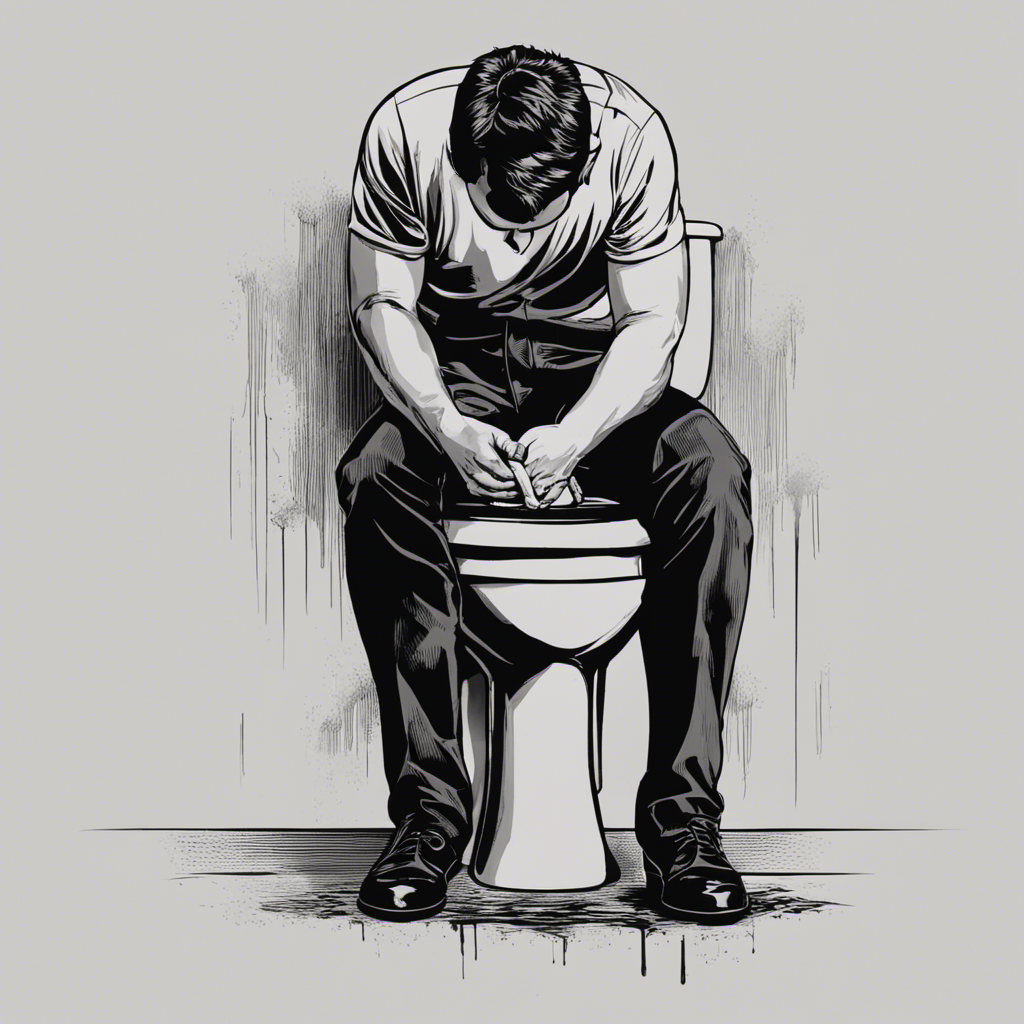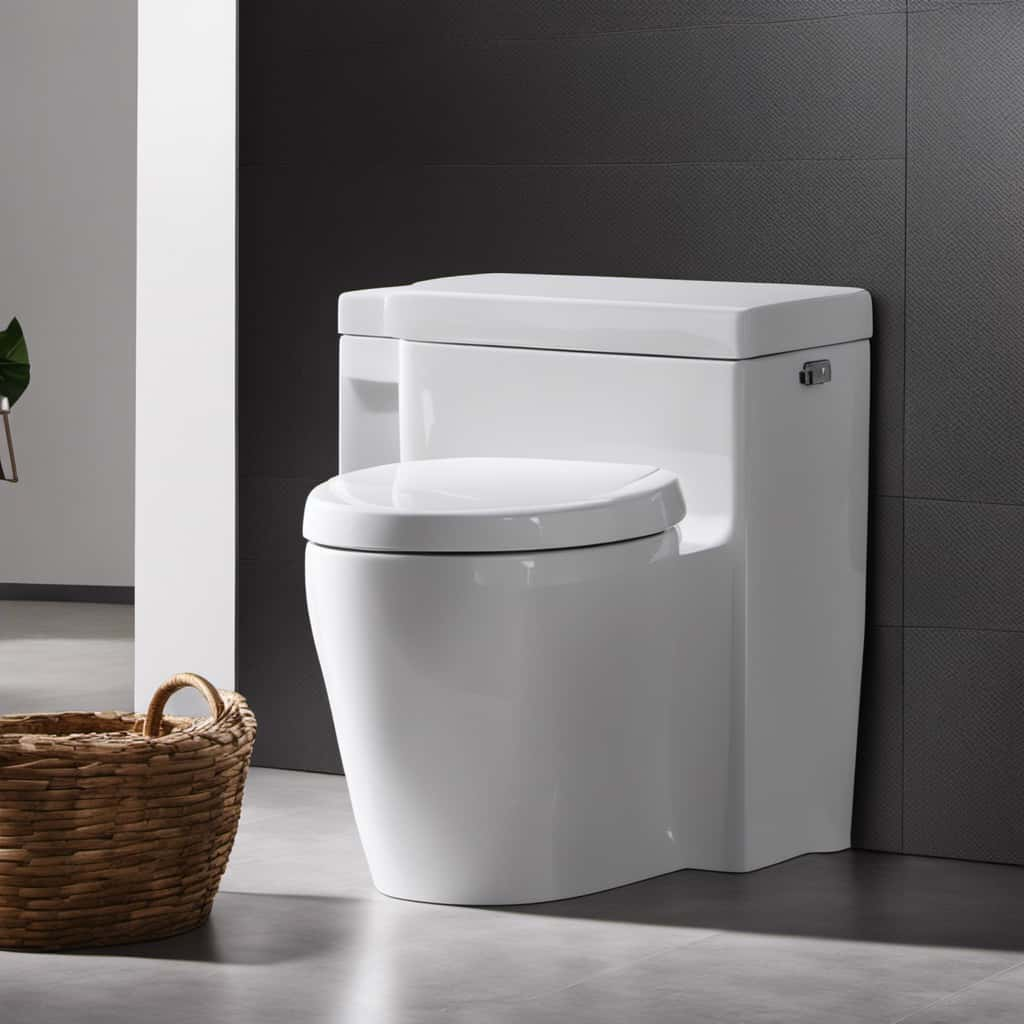I can’t tell you how many times I’ve been rudely awakened in the middle of the night by the sound of my toilet running randomly. It’s like a never-ending symphony of wasted water and frustration.
But fear not, my fellow toilet owners, for I have discovered the secret to stopping this maddening occurrence. In this article, I will share with you the common causes of a running toilet, how to identify one, and the steps you can take to fix it.
So, grab your tools and let’s dive in!
Key Takeaways
- The most common causes of a running toilet include a faulty flapper valve, a misaligned chain, a worn-out or damaged flapper valve, high water pressure, and an obstructed or damaged float ball or cup.
- To identify a running toilet, you can check if the flapper valve is properly sealing the tank, inspect the fill valve and adjust if necessary, ensure the water level is not above the overflow pipe, look for signs of continuous water flow into the bowl, and test the flush lever for any sticking or malfunctioning.
- Troubleshooting a running toilet involves checking if the flapper valve is properly sealed, adjusting the fill valve to regulate the water level, clearing any obstructions in the float ball or cup, replacing the worn-out flush valve seal if necessary, and adjusting the water level in the tank.
- Steps to fix a running toilet include turning off the water supply, unclogging the toilet, replacing the faulty flapper valve, reconnecting the flush valve, and testing for proper functioning before turning the water supply back on.
Common Causes of a Running Toilet
One common cause of a running toilet is a faulty flapper valve. The flapper valve is responsible for sealing the flush valve and preventing water from continuously flowing into the toilet bowl. When the flapper valve is worn out or damaged, it can result in a constant flow of water, leading to a running toilet. This issue can be easily fixed by replacing the faulty flapper valve.
In some cases, the chain connecting the flapper valve to the flush lever may also be the culprit. Toilet repair services can help with identifying and fixing these issues, but if you’re feeling confident, DIY toilet repairs are also an option. By addressing a faulty flapper valve, you can effectively stop your toilet from running randomly.
Now let’s move on to how to identify a running toilet.
How to Identify a Running Toilet
When it comes to a running toilet, there are a few common causes that could be behind the issue. Troubleshooting a running toilet involves identifying these causes and finding the appropriate solution.
In this discussion, I will explore the common causes of a running toilet and provide tips on how to troubleshoot and fix the problem.
Common Running Toilet Causes
To fix your randomly running toilet, check if the flapper valve is properly sealing the tank. The flapper valve is responsible for controlling the water flow from the tank to the bowl. If it is not sealing properly, water will continuously leak into the bowl, causing your toilet to run randomly. This can waste a significant amount of water and increase your water bill.
In some cases, the flapper valve may just need to be cleaned or adjusted. However, if it is damaged or worn out, it will need to be replaced. If you’re comfortable with DIY toilet fixes, you can purchase a new flapper valve from a hardware store and install it yourself. Otherwise, you can contact a professional toilet repair service to assist you.
Troubleshooting a Running Toilet
Check if the water level in the tank is too high, as this could be causing your toilet to run constantly. To troubleshoot a running toilet, there are a few steps you can take. First, check the flapper valve to ensure it is properly sealed. If it is not, it may need to be replaced. Next, inspect the fill valve and adjust it if necessary to regulate the water level. Additionally, check the float ball or cup to ensure it is not obstructed or damaged. If these steps do not resolve the issue, it may be best to contact a professional toilet repair service for further assistance. Remember, addressing a running toilet promptly not only ensures water conservation measures are in place, but also prevents potential damage and higher water bills.
| Common Causes of a Running Toilet | Possible Solutions |
|---|---|
| Faulty flapper valve | Replace the flapper valve |
| Misadjusted fill valve | Adjust the fill valve |
| Obstructed float ball or cup | Clear any obstructions or replace damaged float ball or cup |
| Worn out flush valve seal | Replace the flush valve seal |
| Water level too high | Adjust the water level |
Steps to Fix a Running Toilet
First, you’ll want to make sure the water supply to the toilet is turned off. This is an important step to take before attempting to fix a running toilet.
Once the water supply is off, you can proceed with the necessary steps to unclog a toilet and fix any issues with the toilet flapper.
To unclog a toilet, you can try using a plunger or a toilet auger to remove any blockages.
If the toilet flapper is faulty, you may notice signs such as water continuously running into the bowl or a weak flush. In this case, you can replace the flapper by disconnecting it from the flush valve and installing a new one.
Remember to turn the water supply back on once the repairs are complete.
Tools Needed to Stop a Running Toilet
You’ll need a few tools to fix a running toilet. One of the most important tools is a toilet repair kit. These kits usually include a fill valve, a flush valve, and a flapper.
The fill valve controls the water level in the tank, while the flush valve is responsible for releasing water into the bowl. The flapper, on the other hand, seals the tank and prevents water from continuously flowing into the bowl.
Another useful tool is a water-saving device, such as a dual flush converter or a low-flow toilet fill valve. These devices help reduce water consumption by allowing you to choose between a full flush or a partial flush.
Tips for Preventing a Running Toilet
When it comes to dealing with a running toilet, there are a few key points to consider.
First, checking the flapper valve is crucial, as a faulty or stuck valve can cause water to continuously flow into the bowl.
Second, adjusting the water level can help prevent the toilet from running, as an incorrect water level can lead to overflow or constant refilling.
Lastly, if all else fails, replacing the fill valve may be necessary to ensure proper functioning of the toilet and prevent any further issues.
Check Flapper Valve
To check if the flapper valve is causing your toilet to run randomly, try pressing down on it to see if it’s properly sealed. If the flapper valve is not sealing correctly, it can allow water to continuously flow into the toilet bowl, causing it to run randomly.
Here are a few things you can do to check the flapper valve:
-
Check the water pressure: High water pressure can cause the flapper valve to not seal properly. Consider installing a pressure regulator to reduce the water pressure.
-
Inspect the overflow tube: Make sure the overflow tube is not blocked or damaged. If it is, water may not flow properly, causing the flapper valve to malfunction.
-
Clean the flapper valve: Over time, the flapper valve can accumulate debris and mineral deposits. Clean it thoroughly to ensure a proper seal.
By checking the flapper valve and taking these steps, you can diagnose and potentially fix the issue of your toilet running randomly.
Now, let’s move on to the next step: adjusting the water level.
Adjust Water Level
To ensure that your toilet stops running randomly, it’s important to adjust the water level inside the tank. By doing so, you can prevent excess water from flowing into the bowl and causing the running issue. One way to adjust the water level is by increasing the water pressure in the tank. This can be done by turning the water supply valve clockwise, gradually allowing more water to fill the tank. Another method is to adjust the float ball, which controls the water level. By bending the float arm slightly downwards, the float ball will sit lower in the tank, shutting off the water supply at a lower level. This simple adjustment can effectively solve the problem of a running toilet.
| Step | Method | Description |
|---|---|---|
| 1 | Increase water pressure | Turn the water supply valve clockwise to allow more water to fill the tank. |
| 2 | Adjust float ball | Bend the float arm slightly downwards to lower the float ball in the tank. |
| 3 | Test the adjustments | Flush the toilet and observe if the running issue has been resolved. |
| 4 | Fine-tune if needed | Repeat the adjustments until the desired water level is achieved and the toilet stops running randomly. |
Replace Fill Valve
The next step is replacing the fill valve in order to address the running issue with your toilet. The fill valve is responsible for regulating the water flow into the toilet tank, and if it becomes faulty, it can cause the toilet to run continuously.
Here are some things to keep in mind when replacing the fill valve:
-
Turn off the water supply: Before starting any repairs, make sure to shut off the water supply to the toilet to avoid any leaks or accidents.
-
Remove the old fill valve: Disconnect the water supply line and unscrew the nut holding the fill valve in place. Carefully lift the old fill valve out of the tank.
-
Install the new fill valve: Place the new fill valve in the tank, making sure it is securely positioned. Reconnect the water supply line and tighten the nut.
Replacing the fill valve is an essential part of toilet maintenance and can help resolve running issues efficiently.
When to Call a Professional for a Running Toilet
If you’re experiencing consistent issues with your running toilet, it might be time to consider calling a professional for assistance. While some toilet problems can be fixed with a simple DIY approach, there are certain signs that indicate it’s best to leave it to the experts.
One common sign of a malfunctioning toilet is if it constantly runs even after you’ve tried to fix it yourself. This could be due to a faulty flapper or a more complex issue with the fill valve.
Additionally, if you notice water leaking from the base of the toilet or if it makes strange gurgling noises, it’s important to call a plumber. These could be indications of a more serious problem that requires professional attention.
Conclusion
In conclusion, fixing a running toilet is a relatively simple task that can save you both water and money. By identifying the common causes, such as a faulty flapper or a damaged fill valve, and following the steps to fix it, you can easily put an end to the random running.
Remember to use the necessary tools, like a wrench or pliers, and take precautions to prevent future issues. Don’t let your toilet run like a wild horse, take charge and fix it today!










